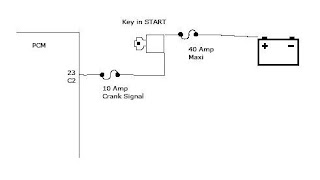I have saved this article for many years, but not the magazine issue so I'm not sure the exact month/year it was originally published. It rang so very true then and unfortunately even now. I've done my part over the years, trying to educate my customers about what diagnostics actually is and how it is accomplished but I will admit that I am outnumbered by the sheer amount of false information out there. Anyway, I'll reproduce the article here. .... Kenny
Motor Age
The Most Widely Believed Myth
It is a widely believed myth. In fact, it may be the most widely believed myth in modern American society. It is a myth that is detrimental to the automotive repair industry in general and to its most skilled and experienced members in particular. Yet, despite this fact, it it actually believed by some members of this industry. It is the diagnostic machine myth - the belief that machines diagnose automotive faults.
Those of us who diagnose automotive faults for a living, whether said faults are of a mechanical, electrical or computerized nature - and all of these are subject to the belief that some machine exists which can diagnose them - know this to be a ridiculous belief. This is not to say that those pieces of test equipment which are commonly referred to as 'diagnostic machines' are not useful in the course of fault diagnosis. They are, in fact, necessary to the process in many instances. Regardless of this, however, these machines are simply tools to be utilized by highly skilled individuals, if an accurate diagnosis is to be made. The tracing of an automotive fault requires that a skilled individual determine where the fault lies, based on the results of tests made using 'diagnostic machines' and other pieces of test equipment. In addition, the specific machines to be used and the exact tests to be made must be decided upon by someone possessing the proper, high level of knowledge and skill.
Motorists not only find this myth easy to believe, but they are comfortable with it. In fact, most of them are far more comfortable with the belief that machines or, in some cases, on-board computers will tell repair personnel where faults lie than they are with entrusting a diagnostice task to automobile technicians, whom they find hard to envision as being highly knowledgeable and skilled.
Unfortunately, the myth lives on unchecked, despite the fact that it harms our industry by allowing motorists to believe that an automotive fault, or even a number of faults, can and should be diagnosed for a fixed, nominal fee. This thinking can make it virtually impossible to convince repair customers that several hours of testing time might be needed to diagnose faults in high-tech systems when extensive, hands-on tests are required. It also allows them to believe the greatest skill that we must possess is that of attaching the 'all-powerful' machine to their vehicle.
The diagnostic machine myth is a major factor in our industry's inability to gain motorists' respect because it allows them to mentally avoid giving us credit for the technical skills that we must possess in order to repair modern automobiles. Dispelling this myth is not something that can b accomplished by individual members of the repair industry. However, an organized effort by this industry's members and its many organizations could go a very long way toward correcting motorists' false perceptions of us and the work we do.
Kevin Carpenter owns Automotive Electronics Specialists in Sacramento, CA. He has specialized in driveability and electrical systems diagnosis for more than half of his 21 years in the automotive industry. Prior to opening his specialty shop, Kevin received an associate degree in Computer Electronics from Sacramento's American River College.
-----------------------------------------------------------------------------------------
I don't have an answer and the myth has just grown over the years. I guess I just keep doing my part and explain as I can.
Kenny




